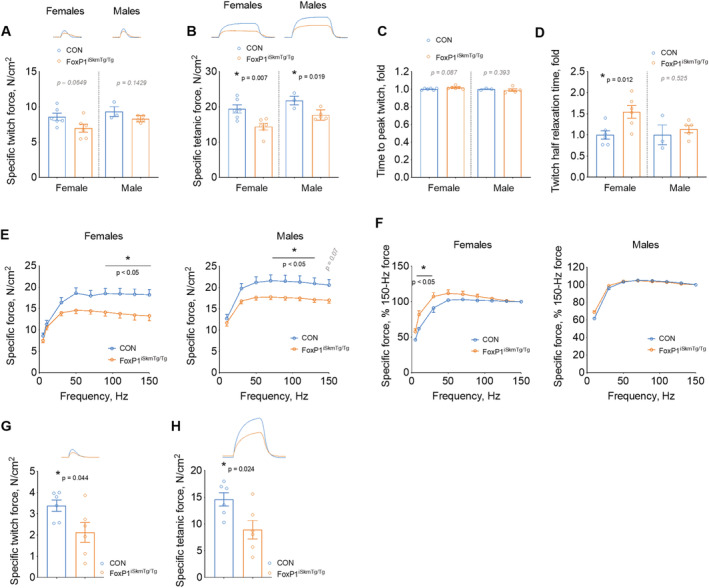Figure 5.

Inducible, skeletal muscle‐specific FoxP1 over‐expression causes skeletal muscle weakness. Specific twitch (A) and tetanic (B) forces recorded from diaphragm strips from CRE+ FoxP1iSkmTg/Tg mice (orange) and CRE‐ littermate controls (blue). Twitch contraction (C) and half relaxation times (D) show slower kinetics in female CRE+ FoxP1iSkmTg/Tg mice vs. CRE‐ littermate controls. (E–F) Force–frequency relationships obtained from CRE+ FoxP1iSkmTg/Tg mice and CRE‐ littermate controls indicate that diaphragms from CRE+ FoxP1iSkmTg/Tg mice show reduced specific forces, and a leftward shift at low stimulation frequencies (F). Twitch (G) and tetanus (H) forces recorded from soleus muscles harvested from CRE+ FoxP1iSkmTg/Tg mice (orange) and CRE‐ littermate controls. Depending on data distribution, unpaired two‐tailed t‐tests or Mann–Whitney tests were performed to test for statistical differences between groups in panels (A–D) and (G–H). Statistical differences between means were tested by conducting two‐way mixed ANOVAs for panels (E) and (F). Data are reported as mean ± SEM.
